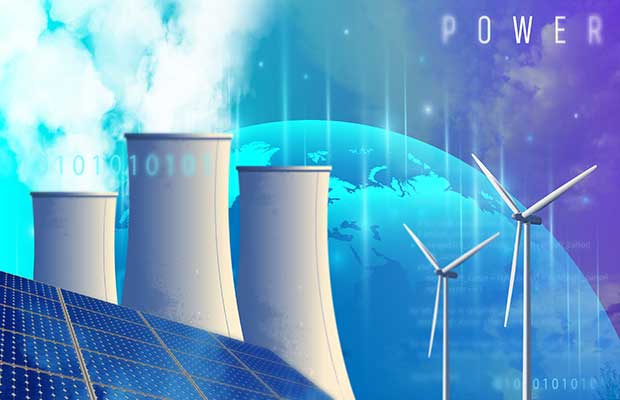Our Terms & Conditions | Our Privacy Policy
Microsoft, Google, and Now Amazon- Is Nuclear Hip Again?
Highlights :
- Tech giants have started backing nuclear energy, including SMRs in a big way as they seek access to dependable energy that is clean to run their power hungry data centres and AI led requirements.
- For once, it is not just economics, but the need for dependable power that is powering these premium deals.
Last month, on September 20 came the news that Microsoft and Constellation Energy, the utility that owns Three Mile Island nuclear power facility, have inked a deal that would help restart Unit 1 at the Three Mile Island Nuclear Generating Station. the deal marked the first time a shuttered nuclear plant in the US was restarted.
The Tech Embrace of Nuclear- Data Centres and AI
Yesterday, Amazon announced that it would be supporting the construction of four small modular reactors (SMRs) by Energy Northwest, a consortium of utilities in Washington state in the US. The reactors are expected to initially produce about 320 megawatts of power, with the ability to build additional modules and increase the total capacity to 960 megawatts. Amazon will have the right to purchase electricity from the first four reactors. The firm involved in building the reactors is X-Energy, that already has Amazon backing.
Earlier, Amazon also also bought a $650 million data center in Pennsylvania that was powered by the nearby nuclear-powered Susquehanna Steam Electric Station.
Sandwiched between these two deals is a momentous deal from Google itself, which signed the world’s first corporate agreement to purchase nuclear energy from multiple small modular reactors (SMRs) to be developed by Kairos Power. The initial phase of work is intended to bring Kairos Power’s first SMR online quickly and safely by 2030, followed by additional reactor deployments through 2035. Overall, this deal will enable up to 500 MW of new power to U.S. electricity grids, easily making it a multi billion dollar deal.
Microsoft’s deal is for 20 years where Microsoft will buy the power generated by Unit 1 at three mile island for an estimated $110-$115 per megawatt hour in order to reliably power its Artificial Intelligence (AI) data center demand. Plans are subject to approval from the Nuclear Regulatory Commission.
The announcements from the three tech titans underscores the new acceptance of nuclear power, especially power flowing from SMRs. In India as well, key public sector energy firms and some large corporates have already started initial moves to explore, and enter the market. SMR’s are considered much more safer than traditional nuclear plants, being much smaller (Amazon’s planned SMRs are a cluster of SMRs of 80 MW each ) . The Google backed Kairos power for instance uses a molten-salt cooling system, combined with a ceramic, pebble-type fuel, to efficiently transport heat to a steam turbine to generate power. This passively safe system allows the reactor to operate at low pressure, enabling a simpler more affordable nuclear reactor design.
Expanding The Renewable Story To Nuclear
Top tech firms including these three and others were one of the earliest to push for renewable energy, including a time when it was priced higher than grid power. That allowed demand to grow and eventually, make it accessible for more and more customers in markets where they operate. Even in India, we have seen how open access deals from tech forms have headlined the larger green energy deals until recently. Nuclear power advocates will hope that the same story repeats itself with SMRs in particular, as early backing (and success with timely deliveries) could open up the SMR market with the initial burst of orders from these tech giants.
Should Other Renewables Worry?
A curious backstory to the rise of renewables especially solar and wind has been the relative pushback against nuclear power. Derided as too expensive, undependable (in terms of construction time) and ‘risky’ detractors have been happy to see older power plants shut down even as it has become clear that just solar and wind cannot bridge the vast energy gap for clean energy. The emergence of SMRs was derided as first, but now, will be taken a lot more seriously. Ironically, if they are too successful, in terms of delivering clean power dependably, long term projections for solar and wind energy capacity additions, especially post 2032 and beyond, might have to be reconsidered. Already, extreme climate change linked events that have caused extensive damage to solar plants has underscored the need to plan better in terms of plant locations, or making them more resilient to such weather. One thing is for sure. Along with king coal, the age of making 25-50 year projections for the energy sector is also ending soon.
Images are for reference only.Images and contents gathered automatic from google or 3rd party sources.All rights on the images and contents are with their legal original owners.



Comments are closed.